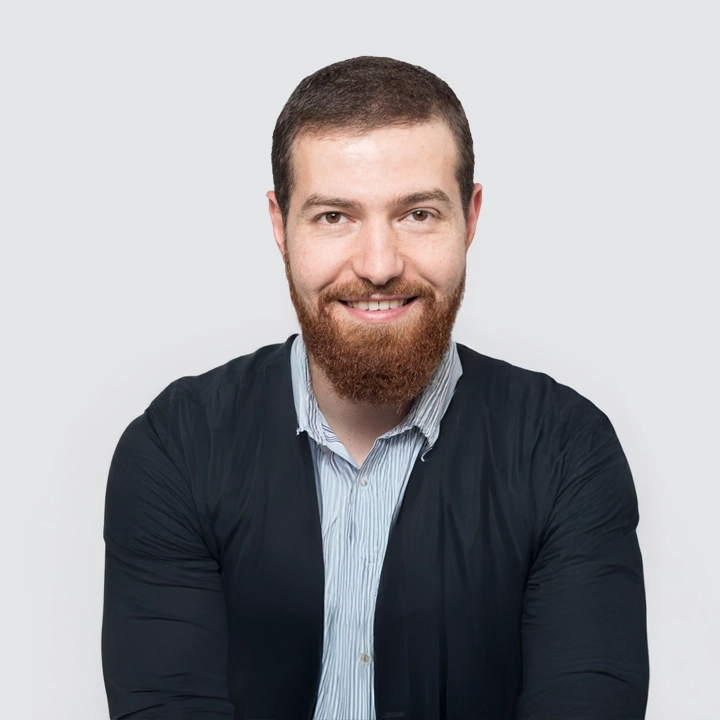When we think about cutting-edge technologies like 5G, radar systems, or industrial RF power solutions, it’s easy to focus on the end result: faster speeds, more reliable connections, and improved performance. But behind every powerful RF transistor is a team ensuring that each component not only meets performance expectations but thrives under extreme conditions. One key player in this process? The Characterization Engineer (CE) - a role blending technical expertise, innovation, and collaboration to turn advanced semiconductor designs into reliable, high-performance solutions.
We sat down with Mohammad Msheik, Senior Characterization Engineer and On-Wafer Lab Manager at Ampleon, to dive into his world, exploring what drives him, how he tackles challenges, and how he sees the future of RF power semiconductors heading.
For me, it has always been about understanding how things work - and how to make them work better. RF power technology is fascinating because it is not just about performance on paper; it is about ensuring that performance holds up under real-world, often harsh conditions.
Characterization gives me a chance to dive deep into the behavior of a device, push it to its limits, and ensure it delivers every time. Ampleon’s focus on innovation and collaboration really sealed the deal for me to join the team.
My role here is continuously growing. Initially, it was focused on pure measurement and validation - ensuring the transistor meets datasheet specifications. Now, the CE team is taking on a more comprehensive role, including industrialization support and possibly owning Production Test Circuit design in the future. Learning never stops, which keeps things exciting. Working as a lab manager has helped me grow in the RF domain and has brought me face-to-face with cutting-edge technology.
It is a blend of hands-on work in the lab and data analysis. We validate performance by measuring GaN and LDMOS wafers, then compare those results to the datasheet parameters or customer specifications. This ensures that what we design is what our customers get. Some days are all about ruggedness testing - simulating input spikes or thermal stresses to ensure the device holds strong. Other days are more focused on optimizing industrial test setups for high-volume production.
Balancing accuracy and speed. Characterization must be incredibly precise to detect subtle performance differences - things like loop-height variants in the process corners or low-temperature stability. At the same time, we need fast data turnaround to keep development on track. This is where collaboration with Design Engineers (DE), Application Engineers (AE), and Test Engineers (TE) becomes crucial. Everyone brings a different expertise to the table.
We are part of a larger ecosystem. Within the Test, Product, Characterization, and Mechanical Engineering group, we work closely with DE, AE, and TE teams to ensure a smooth transition from development to production. It is all about ensuring performance remains rock-solid from lab to factory floor.
Tools like AMCAD, WINcal, Velox, ANTIVERTA, Load-pull, InfraRed testing, and VeePower are already game-changers, but what excites me is how we are combining them. Take ANTIVERTA system, for example, which is a tool that helps us to dive deeper into the characteristics of the device at maximum efficiency and power, and to see the optimum impedance and performance.
One major shift is expanding my ownership to device design - bridging the gap between technology and application. It is a logical next step that will make the handover from characterization to device releases even smoother for me. Beyond that, I think the future holds more advanced automation, faster thermal analysis, and smarter data analytics to spot performance trends faster.
Honestly, it is the thrill of discovery. Every day, we are testing the limits of RF power technology - not just to meet standards, but to exceed them. Knowing that our work enables advancements in 5G/6G networks and base stations, radar systems, and even renewable energy is incredibly motivating. I hope to leave a legacy where my characterization methods become the gold standard for reliability and performance.
The work of a Senior Characterization Engineer at Ampleon goes far beyond measurements and data. It’s a dynamic blend of deep technical analysis, problem-solving, and teamwork - all geared toward ensuring Ampleon’s RF power solutions perform flawlessly, no matter the conditions.
Whether exploring the new GaN technology or preparing industrial test setups for mass production, the CE team stands at the intersection of innovation and reliability. They’re not just validating today’s technology - they’re shaping the performance standards of tomorrow’s RF power solutions.
About the author
Mohammad is an expert in on-wafer testing and RF power semiconductor characterization. He leads lab operations for high-performance industrialization of LDMOS and GaN technologies, wafer handling, probe station mastery, active/passive and hybrid load-pull calibration, as well as DC and SPAR measurements. With a focus on precision, reliability, and cross-lab consistency, Mohammad supports teams for validation, reliability, modeling and product test development - ensuring cutting-edge RF power solutions perform flawlessly from development to production.

Senior Characterization Engineer and On-Wafer Lab Manager